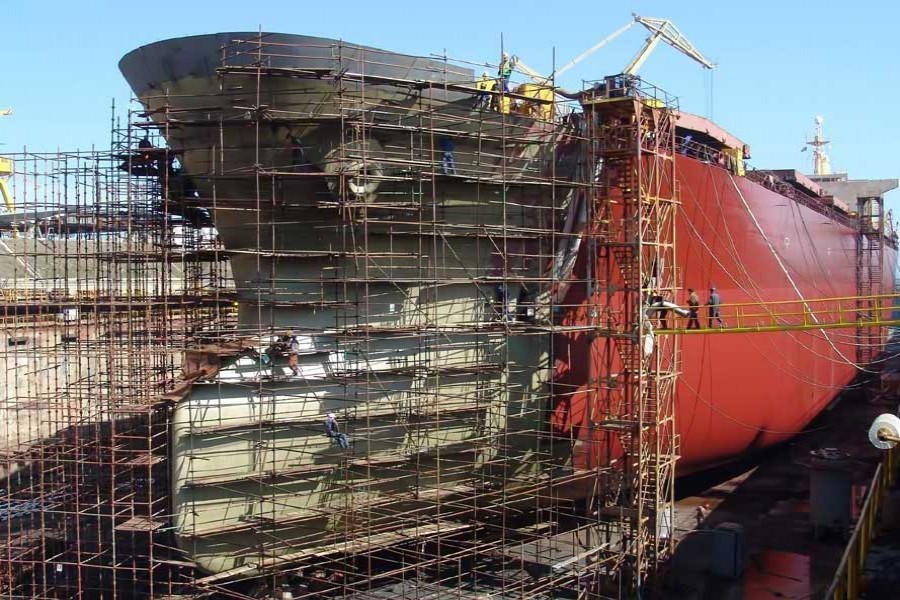The Shipbuilding Industry Development Policy-2020 recently approved by the government, though belated, is no doubt a well directed move not only to acknowledge the potential of this unexplored area but also to give it the focus it deserves as a potential growth driver of the economy. Given the capital-intensive nature of the industry, investment in this sector needs a well formulated government policy backed by sound fiscal and other associated rules and incentives to help it grow, while also attracting large investment from home and abroad. There is also the need to discipline the functioning of the dockyards and shipyards that till now are reportedly non-compliant with international practices and standard protocols. The aforementioned policy aims at earning $4.0 billion annually from ship exports by the year 2025.
With global shipbuilding orders of large vessels increasing every year, a highly prospective market is emerging for Bangladesh with increasing demands for small and medium sea-going vessels as the industry leaders like China and South Korea are after larger container ships, bulkers and tankers. Others, including Germany and Italy, have moved away from the shipbuilding. According to shipbuilding experts at home and abroad, Bangladesh can emerge as a surprise competitor in the market segment of small to medium ocean-going vessels. The focus of overseas buyers has been on Bangladesh for sometime, testing the strength of the country's not-so-organised shipyards with stray orders. The test over, it is indeed gratifying that our manufacturers are now receiving orders from many countries. Bangladeshi companies have so far received orders for 40 ships of ten categories from 15 countries. The countries have placed orders for ro-ro vessel, multipurpose container vessel, tug boat, landing craft, bulk carrier, patrol vessel, catamaran water taxi, ferry, oily waste collection vessel and passenger vessels. Currently, global annual manufacturing capacity of ships is reportedly 7,500 which is expected to rise to 12,000 by 2025. Experts opine that if the present trend continues, Bangladesh has a fair chance to gain considerably from shipbuilding and exports.
There are 100 shipyards and dockyards in the country, and although export of ships from Bangladesh began in 2008, only a few shipyards follow international standards, according to industry insiders. The plan to earn $4.0 billion from exports will obviously depend on how well the policy is implemented, or in other words, how effectively the policy addresses the key issues to promote the industry up to its potential.
What is no less important here is that the policy can create a facilitating environment for backward linkage industries. At present in the absence of backward linkage facilities, most of the accessories such as steel pipes, sanitary equipment, furniture, doors, windows, engines, power generators, switchboards, transformers, upholstery etc., are imported, and the manufacturers are only able retain the labour costs and shipyard profit. With the backward linkage facilities in place, if a portion of the imported materials are procured locally, the earnings would increase manifold. This would, in turn, have a multiplier effect on the economy in terms of employment generation, subcontract servicing and a boost in numerous other areas.


